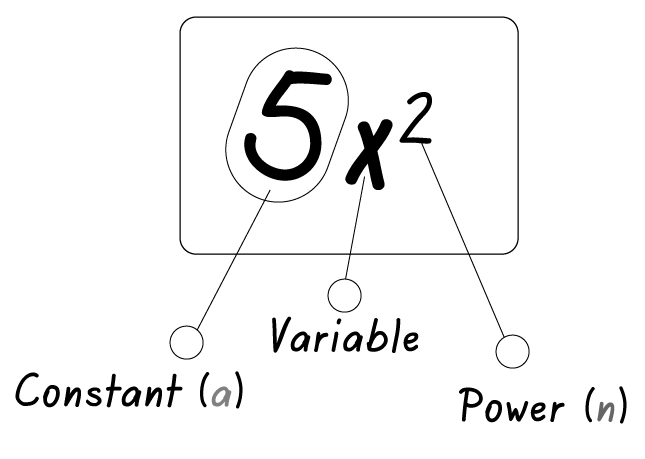Differentiate x^(1/2) With Steps
Answer

Differentiation of a √x
When we differentiate the function √x or x^(1/2), we use the power rule of differentiation.
Let y = √x or x^(1/2) , then we can rewrite y as y = x^(1/2).
To find the derivative of y with respect to x, we use the power rule which states that if y = x^n, then the derivative dy/dx = nx^(n-1).
Applying this rule, we have y' = 1/2 \cdot x^{- \frac{1}{2}}.
Therefore, the derivative of √x or x^{\frac{1}{2}}is 1/(2√x) or 1/(2x^\frac{1}{2}).
This means that the rate of change of the function √x is inversely proportional to 2 times the square root of x.
You can also differentiate coefficient of x in the following form
Common functions
7
6x
x^{1/2}
2x^2
Exponential functions
-e^{-\frac{12}{7x}}
-3e^{2x}
Trigonometric functions
4 \sin (x)
-\cos(3x)
Logarithmic functions
4In9x
1. Find the derivative of the function -2x^{-\frac{1}{2}}.
Solution:
To find the derivative of a function in the form f(x) = ax^n, where a and n are constants, we use the power rule. The derivative is given by:
f'(x) = n \cdot a \cdot x^{n-1}.
Applying this rule to the given function, we have:
f'(x) = -\frac{1}{2} \cdot -2 \cdot x^{-\frac{1}{2}-1}</p><p>= x^{-\frac{3}{2}}.
Therefore, the derivative of -2x^{-\frac{1}{2}} is
x^{-\frac{3}{2}}.
2. Determine the derivative of e^{x}.
Solution:
The derivative of e^{x} is itself, as the derivative of
e^{x} is e^{x}.
This is a unique property of the exponential function e^{x}.
Therefore, the derivative of e^{x} is
e^{x}.
3. Calculate the derivative of 4\cos(9x).
Solution:
By applying the chain rule and derivative of cosine function, we have:
f'(x) = -4 \cdot 9 \sin(9x) = -36 \sin(9x).
Therefore, the derivative of 4\cos(9x) is
-36 \sin(9x).
4. Find the derivative of -3e^{\frac{8}{5}x}.
Solution:
Similarly to the derivative of e^{x}, the derivative of e^{\frac{8}{5}x} is itself times the constant \frac{8}{5}:
f'(x) = -3 \cdot \frac{8}{5} e^{\frac{8}{5}x} = -\frac{24}{5} e^{\frac{8}{5}x}.
Therefore, the derivative of -3e^{\frac{8}{5}x} is
-\frac{24}{5} e^{\frac{8}{5}x}.
5. Differentiate the function 4\sin(2x).
Solution:
Using the chain rule and derivative of the sine function, we get:
f'(x) = 4 \cdot 2 \cos(2x)= 8 \cos(2x).
Therefore, the derivative of 4\sin(2x) is
8\cos(2x).
1. \frac{d}{dx}\left(-2x^{-\frac{1}{2}}\right) = x^{-\frac{3}{2}}
2. \frac{d}{dx}\left(-e^x\right) = -e^x
3. \frac{d}{dx}\left(4\cos(9x)\right) = -36\sin(9x)
4. \frac{d}{dx}\left(-3e^{\frac{8}{5}x}\right) = -\frac{24}{5}e^{\frac{8}{5}x}
5. \frac{d}{dx}\left(5\ln x\right) = \frac{5}{x}
6. \frac{d}{dx}\left(2x^3\right) = 6x^2
7. \frac{d}{dx}\left(9e^{-2x}\right) = -18e^{-2x}
8. \frac{d}{dx}\left(7\sin(2x)\right) = 14\cos(2x)
9. \frac{d}{dx}\left(-4e^{5x}\right) = -20e^{5x}
10. \frac{d}{dx}\left(3\ln(4x)\right) = \frac{3}{x}
11. \frac{d}{dx}\left(-5\cos(3x)\right) = 15\sin(3x)
12. \frac{d}{dx}\left(6e^{-4x}\right) = -24e^{-4x}
13. \frac{d}{dx}\left(2\sin(5x)\right) = 10\cos(5x)
14. \frac{d}{dx}\left(8e^{2x}\right) = 16e^{2x}
15. \frac{d}{dx}\left(4\ln(3x)\right) = \frac{4}{x}
Sample Expressions
For best result write
1 as 1
-1 as -1
x as x
-x as -x
x^{1/2} as x^(1/2)
x^{-1/2} as x^-(1/2)
-x^{1/2} as - x^(1/2)
-x^{-1/2} as - x^-(1/2)
-2x as -2x
2x^2 as 2x^2
-2x^2 as -2x^2
2x^{1/2} as 2x^(1/2)
2x^{-1/2} as 2x^-(1/2)
-2x^{1/2} as -2x^(1/2)
-2x^{-1/2} as -2x^-(1/2)
2x^{-1} as 2x^-1
-2x^{-1} as -2x^-1
-x^{-1} as -x^-1
x^{-1} as x^-1
x^2 as x^2
-x^2 -x^2
-x^{-2} -x^-2
2x as 2x
e^x as e^x
-e^x as -e^x
-e^{-x} as -e^-x
e^{2x} as e^(2x)
e^{-2x} as e^-(2x)
-e^{2x} as -e^-(2x)
-e^{-2x} as e^-(2x)
e^{8/5x} as e^(8/5x)
e^{-8/5x} as e^-(8/5x)
-e^{8/5x} as -e^-(8/5x)
-e^{-8/5x} as -e^-(8/5x)
3e^x as 3e^x
3e^{-x} as 3e^-x
-3e^x as -3e^x
-3e^{-x} as -3e^-x
3e^{2x} as 3e^(2x)
3e^{-2x} as 3e^-(2x)
-3e^{2x} as -3e^(2x)
-3e^{-2x} as -3e^(-2x)
3e^{8/5x} as 3e^(8/5x)
3e^{-8/5x} as 3e^(-8/5x)
-3e^{8/5x} as -3e^(8/5x)
-3e^{-8/5x} as -3e^(-8/5x)
-\cos(x) as -cos(x)
4\sin(x) as 4 sin(x)
-\tan(3x) - tan(3x)
